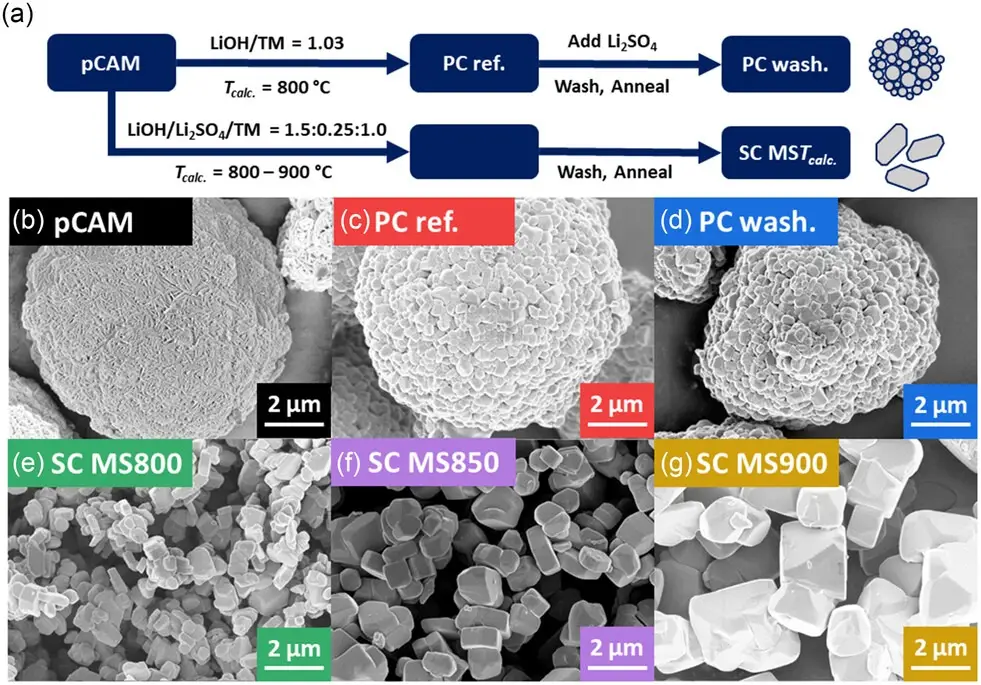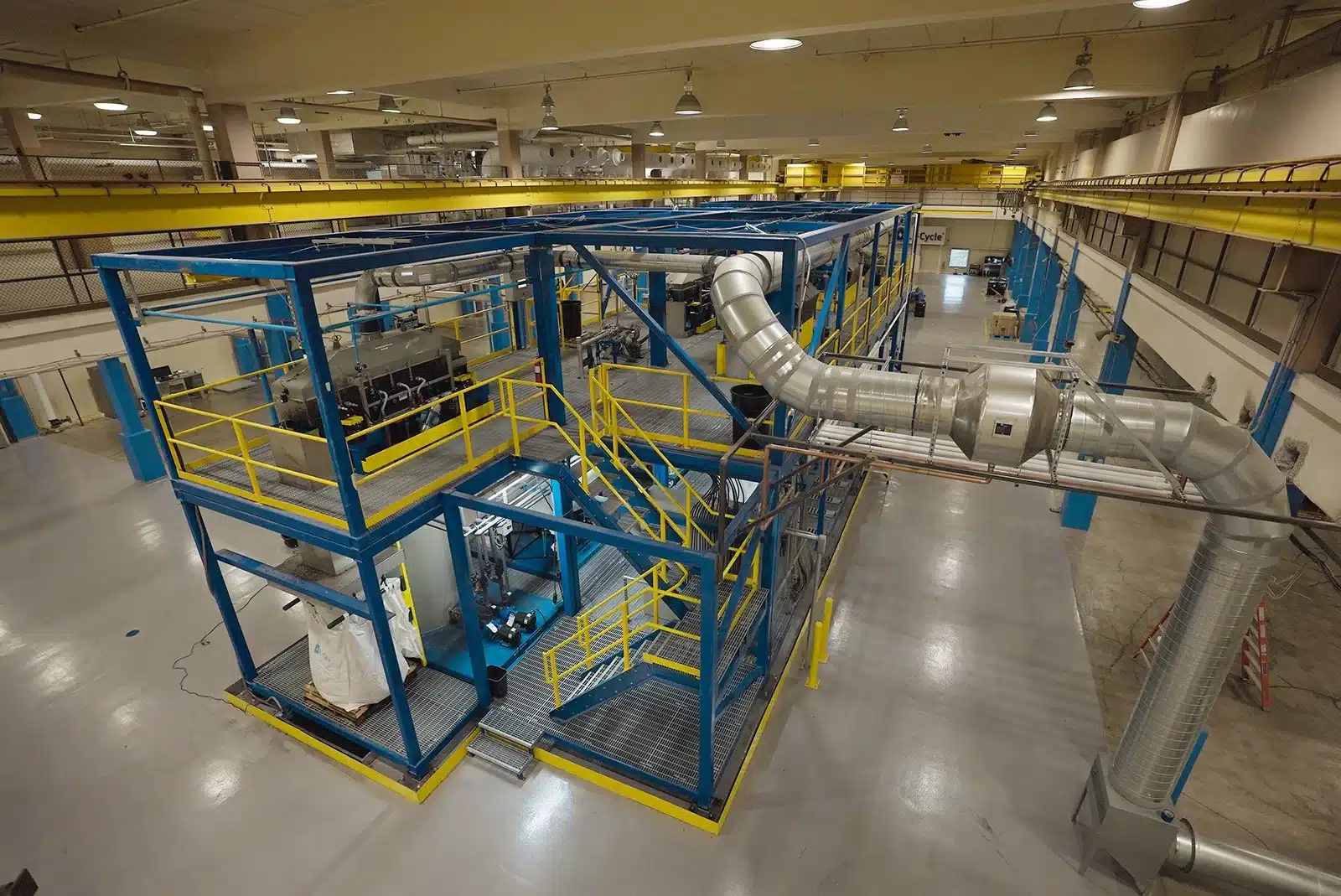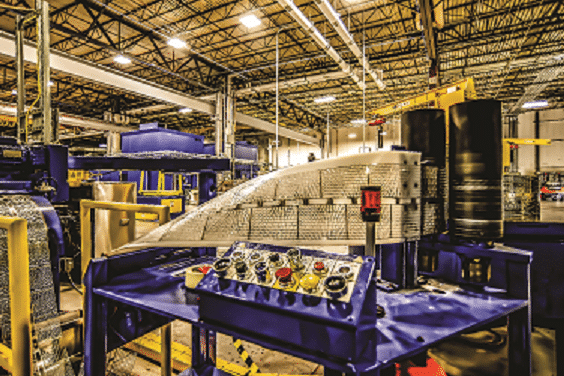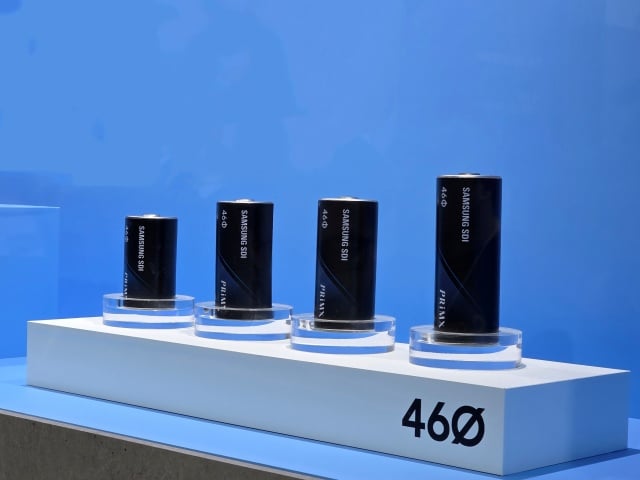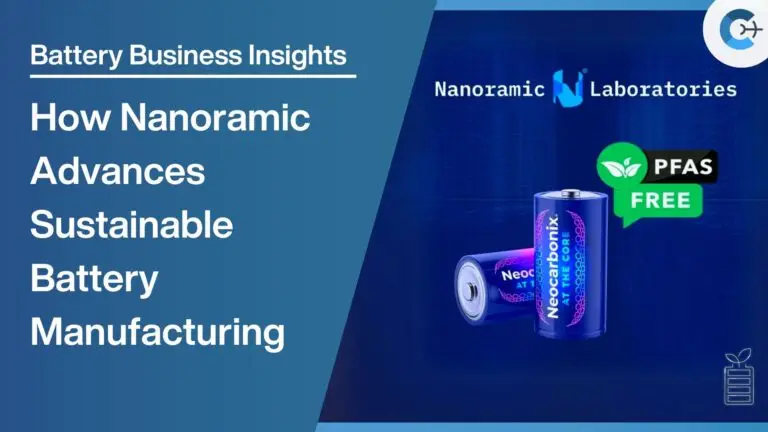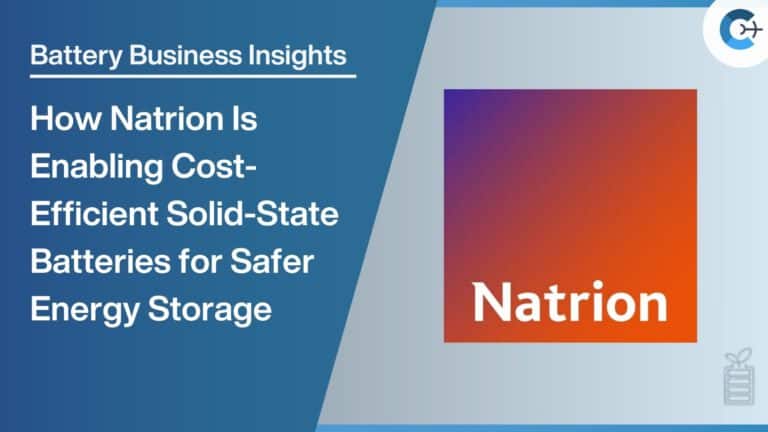Researchers from the University of Münster, the MEET Research Center, and the National Taiwan University of Science and Technology have demonstrated superior performance of single-crystal (SC) nickel-rich cathode materials compared to traditional polycrystalline (PC) versions for lithium-ion batteries. The study, published in Small Structures, systematically compared SC and PC NMC811 (LiNi0.8Mn0.1Co0.1O2) cathodes synthesized from identical precursors.
The team employed a novel molten salt synthesis approach to create SC-NMC811 particles of varying sizes, alongside conventional PC-NMC811 references. Thorough characterization ensured comparability in bulk and surface properties, isolating morphology as the key differentiator.

SC-NMCs showed improved cycle life and energy retention, even when adjusted to deliver similar initial capacities as PC-NMCs. Surprisingly, larger SC particles exhibited better rate capability and cycling stability. When forced to the same state-of-charge, SC-NMCs still demonstrated 56-84% longer cycle life than PC-NMCs.
“By keeping the state of charge constant and not the voltage limits as usual, we prevent possible misinterpretations,” explains MEET scientist Marco Joes Lüther. “In combination with the choice of synthesis, this approach ensures that the increased cycle life can be attributed solely to the ‘single crystal’ particles.”
Post-mortem analysis revealed cracking in PC particles after cycling, while SC particles remained intact. The researchers conclude that the SC morphology provides significant benefits for Ni-rich NMC cathodes, with larger SC particles showing the best overall performance.
This German-Taiwanese collaboration provides important insights for developing next-generation high-energy cathode materials for electric vehicle batteries with improved longevity and performance.
The journal “Small Structures” has published comprehensive findings from a collaborative research effort: https://doi.org/10.1002/sstr.202400119
The study’s authors represent several institutions.
From the MEET Battery Research Center: Marco Joes Lüther, Dr. Aurora Gomez-Martin, Julius Buchmann, Dr. Richard Schmuch, Dr. Tobias Placke, and Dr. Johannes Kasnatscheew
From both MEET Battery Research Center and Helmholtz Institute Münster: Prof. Dr. Martin Winter
From the University of Münster’s Institute for Inorganic and Analytical Chemistry: Dr. Martin Alexander Lange
From the National Taiwan University of Science and Technology: Shi-Kai Jiang and Prof. Dr. Bing Joe Hwang
This publication incorporates results from the “LiBEST2” research project, which received funding support from the Federal Ministry of Education and Research.
Source: MEET – Münster Electrochemical Energy Technology, Wiley — Small Structures

